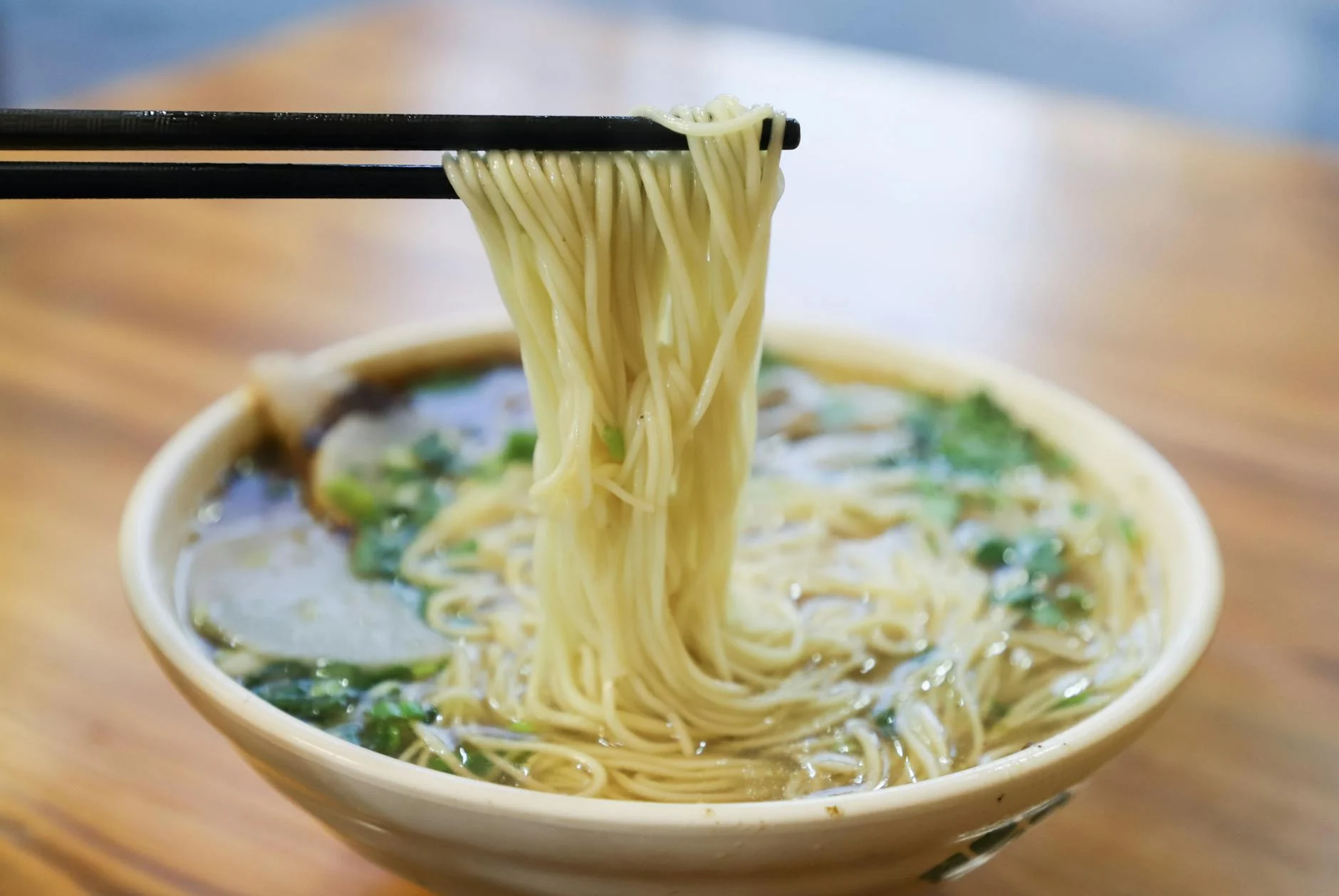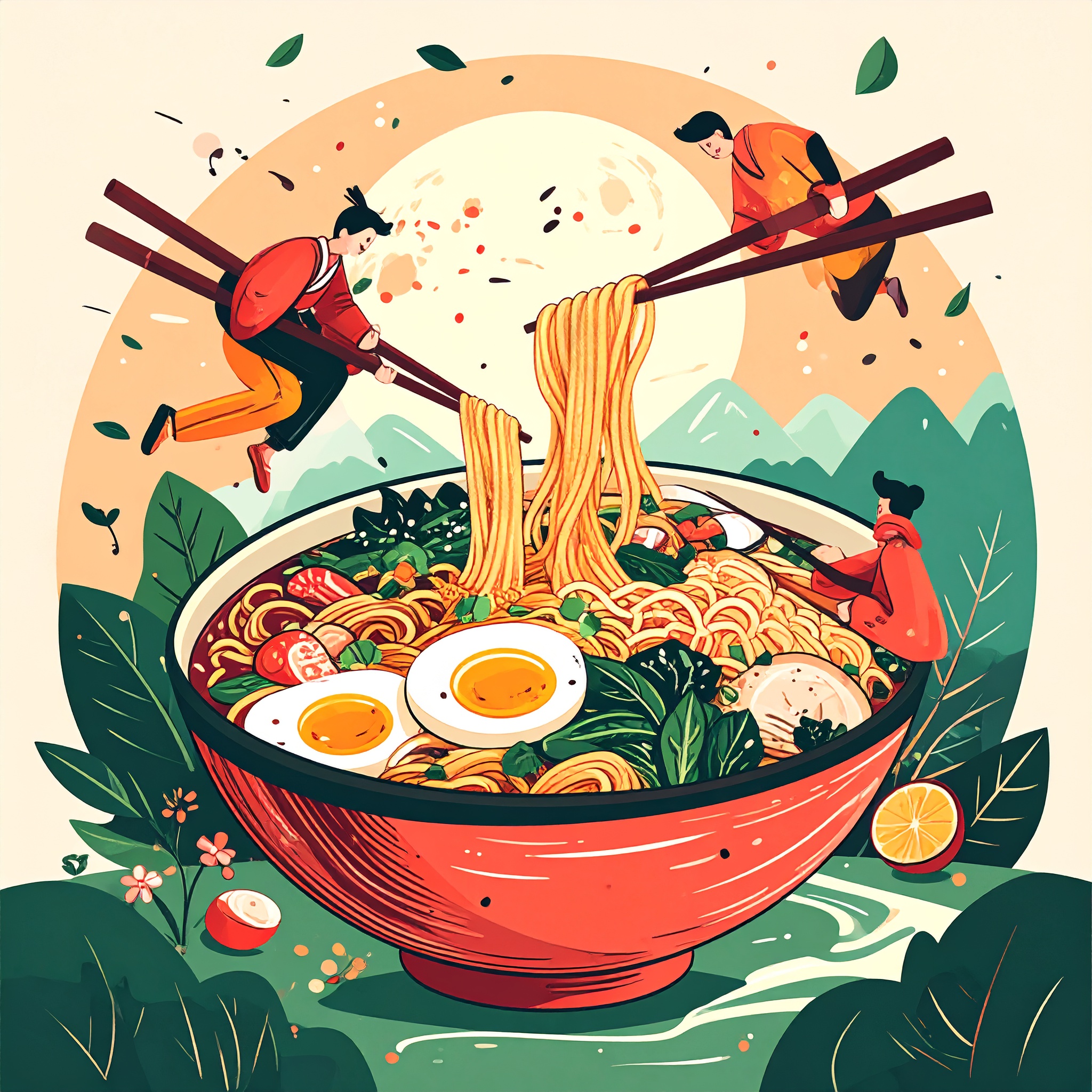There was a time when the excellence of ramen was measured in richness and impact. Bold broths, layers of fat, and lingering intensity were praised as hallmarks of satisfaction—even the thirst that followed was seen as a testament to the bowl’s power. But today, that era of “addition” is quietly giving way to something more refined. In place of excess, value is now found in restraint. It is not about what is added, but what is deliberately left out. This is the age of subtractive ramen—crafted without chemical seasonings, relying solely on the integrity of natural ingredients.
Japan’s ramen culture has evolved dramatically—from its postwar beginnings in street stalls to regionally diverse expressions and now to international acclaim. For decades, chemical flavor enhancers were embraced as a breakthrough: a means to deliver consistent umami, efficiently and affordably. They enabled large-scale production and supported price accessibility, forming a cornerstone of ramen’s mass appeal.
Yet in recent years, a new ethos has taken root—one that prioritizes health consciousness and reverence for natural flavor. More and more chefs are rising to the challenge of creating ramen without synthetic aids, turning instead to the essence of their ingredients. Behind this movement lies not only a shift in dietary values but a deeper philosophical question: What does truly delicious mean?

At the heart of subtractive ramen lies the meticulous art of dashi design. Traditional Japanese ingredients—kombu, dried sardines, katsuobushi, shiitake mushrooms—take center stage, each contributing their own form of umami: glutamic acid, inosinic acid, guanylic acid. When layered with care, their synergies create a broth of profound depth. While animal bones, meats, or vegetables may be introduced to add complexity, the goal remains harmony within the bounds of nature.
Where should the umami peak? How should salt be supported? The choice of ingredients, extraction time, precise temperature control, and the moment of filtration—all shape the final flavor. Achieving the kind of strength that chemical seasonings can instantly provide requires not shortcuts, but extraordinary knowledge and sensory discipline. And because ramen is a complete composition, the broth must align with the tare, aromatic oils, and the texture and absorption of the noodles—each element orchestrated in quiet precision.
This subtractive approach is not merely about the absence of additives. It’s about pursuing a different kind of richness. Less salt, less fat, minimal adornment—and yet, it seeks a flavor that moves the diner from the very first sip and remains compelling through the last drop. It is an exploration of quiet deliciousness, where simplicity becomes a canvas for complexity, and purity becomes a path to emotional depth.
This philosophy aligns deeply with the foundations of traditional Japanese cuisine. At the heart of washoku lies an aesthetic of subtraction—an emphasis on honoring the essence of each ingredient, applying minimal seasoning, and engaging all five senses in the act of dining. When this mindset is introduced into the world of ramen, it begins to elevate the dish beyond its origins as comfort food, transforming it into a culinary expression rich in culture and philosophy.
Yet subtractive ramen is not only difficult to create—it is equally nuanced to communicate. For those accustomed to bold, concentrated flavors, the initial impression may be one of subtlety, even restraint. But with each bite, the distinct character of every ingredient begins to surface, gradually revealing its presence. What lingers after the meal is a surprising clarity. And that clarity leaves a lasting imprint—not as an overt sensation, but as a memory gently etched into the palate.

To realize such a bowl, the same philosophy of restraint must extend to every component—from noodles to toppings. Noodles are often made in-house, not to assert themselves with bold aroma or excessive chew, but to blend seamlessly into the background of the broth. Chashu pork and seasoned bamboo shoots are deliberately low in salt and fat, positioned with care to preserve the balance of the bowl. Toppings are kept to a thoughtful minimum—eschewing excess in favor of purity, allowing the diner to focus fully on the interplay of flavor.
This culture of subtraction also informs the spatial and service design of the ramen shop itself. Lighting is subdued, counters are quiet, interiors are simple and impeccably clean. There are no elaborate introductions or theatrical presentations. Instead, the space respects the act of eating as a form of quiet ritual. Even the sound of sipping the broth or chewing the noodles feels in harmony with the room’s atmosphere—each element designed not to distract, but to deepen presence.
What subtractive ramen ultimately reveals is a belief that simplicity itself can be a form of richness. Without ostentation, these bowls offer something more lasting—food that settles gently into the body and lingers quietly in the heart. This approach resonates deeply with the values of our time: wellness and sustainability.
To create ramen without chemical seasonings is, in essence, to entrust the entirety of flavor to the raw materials and the craft itself. There is no room for shortcuts—only precision, restraint, and quiet confidence. In tasting such a bowl, we are moved not by intensity, but by care.
Ramen, in this moment, is evolving through subtraction. And what lies ahead is a more essential question—not what more can we add, but what is truly worth preserving.




